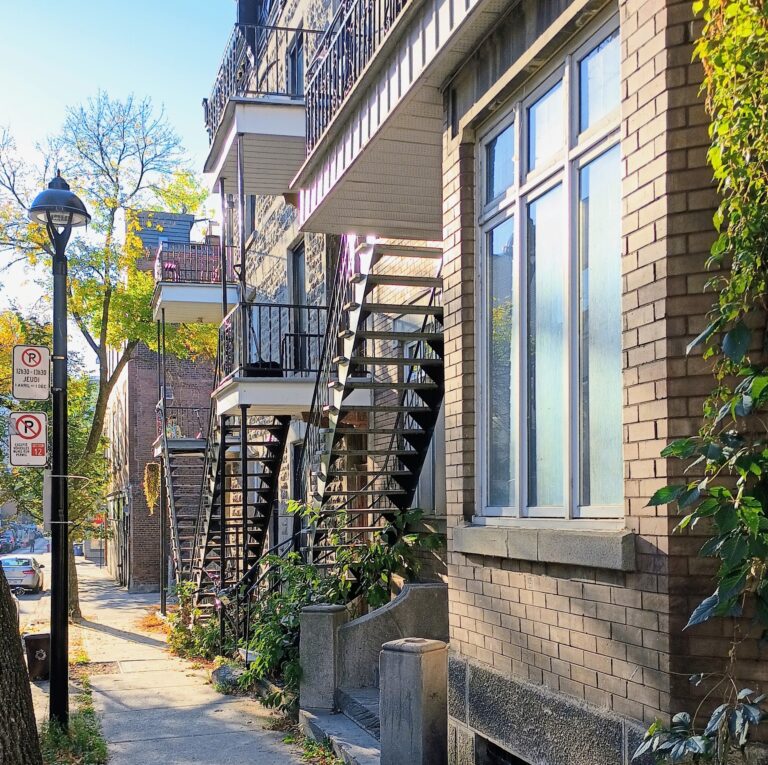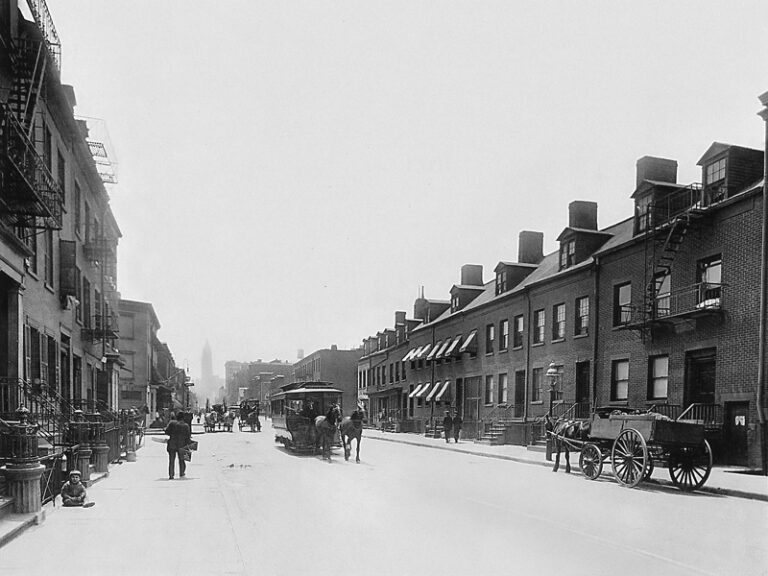Physical Address
304 North Cardinal St.
Dorchester Center, MA 02124
Physical Address
304 North Cardinal St.
Dorchester Center, MA 02124

I frequently reference my post summarizing the interesting research at last year’s Urban Economics Association conference. This year was as insight rich as ever. And the Montreal setting was truly special – it’s a city that’s as European as any…

An old dorm becomes a new shelter for homeless families in DC.
1. This week at Market Urbanism: Nolan Gray contributed a post Who Plans?: Jane Jacobs’ Hayekian critique of urban planning discussing Jacobs’ three arguments against central planning: Hayek and Jacobs defended the importance of local knowledge, illustrated the power of decentralized planning, and celebrated the sublime spontaneous orders that organize our lives. Yet their theoretical innovations went largely unnoticed long after their respective publications. Here, the two thinkers diverge: while Hayekian ideas have largely driven centralized economic planning into the dustbin of history, I suspect the Jacobsian urban revolution has only just begun. The post was also discussed at Reason and Urban Liberty 2. Where’s Scott?: Scott Beyer is now in Oklahoma City, with plans to spend this weekend in Stillwater, OK. This week at Forbes, he described urban liberals’ inability to understand housing “filtering”: Officials believe that if new projects can’t be forced to charge lower prices, they shouldn’t be allowed at all. A smarter approach would be to view such projects the way one would view a gated community of mansions. Sure, such housing isn’t affordable, but it still serves a purpose: to provide rich people a place to live, thereby opening up older, smaller, less luxurious units for lower-income people. 3. At the Market Urbanism Facebook Group: Nolan Gray shared a CityLab piece quantifying the influx of young people in downtowns Private Protection Co. Puts Govt. Police to Shame in Detroit via Mark Frazier Bad news from John Morris: L.A. is seizing tiny homes from the homeless What Computer Games Taught Daniel Hertz About Urban Planning via Erik Genc 4. Elsewhere: Strong Towns spent the week discussing the numerous ways federal housing policies distort the marketplace against walkable urban environments. Lots of good reads and podcasts… Chicago plans to use Eminent Domain to seize the old Post Office and sell it. (when Chicago issues an RFP, […]

Over at Greater Greater Washington, Ms. Cheryl Cort attempts to temper expectations of what she calls the “libertarian view (a more right-leaning view in our region)” on affordable housing. It is certainly reassuring to see the cosmopolitan left and the pro-market right begin to warm to the benefits of liberalization of land-use. Land-use is one area the “right,” in it’s fear of change, has failed to embrace a widespread pro-market stance. Meanwhile, many urban-dwellers who consider themselves on the “left” unknowingly display an anti-outsider mentality typically attributed to the right’s stance on immigration. Unfortunately, in failing to grasp the enormity of the bipartisan-caused distortion of the housing market, Ms. Cort resigns to advocate solutions that fail to deliver widespread housing affordability. Yes, adding more housing must absolutely be a part of the strategy to make housing more affordable. And zoning changes to allow people to build taller and more usable space near transit, rent out carriage houses, and avoid expensive and often-unnecessary parking are all steps in the right direction. But some proponents go on to say relaxing zoning will solve the problem all on its own. It won’t. Well, if “relaxing” zoning is the solution at hand, she may be right – relaxing will only help a tad… While keenly aware of the high prices many are willing to pay, Cort does not seem to grasp the incredible degree to which development is inhibited by zoning. “Relaxing” won’t do the trick in a city where prices are high enough to justify skyscrapers with four to ten times the density currently allowed. When considering a supply cap that only allows a fraction of what the market demands, one can not reasonably conclude “Unlimited FAR” (building density) would merely result in a bit more development here and there. A radically liberalized land-use regime would […]

Co-authored with Anthony Ling, editor at Caos Planejado Gentrification Gentrification is the process through which real estate becomes more valuable and, therefore, more expensive. Rising prices displace older residents in favor of transplants with higher incomes. This shouldn’t be confused with the forced removal of citizens via eminent domain or “slum clearance.” Ejecting residents by official fiat is a different problem entirely. A classic example of gentrification is that of Greenwich Village, New York. Affluent residents initially occupied the neighborhood. It later became the city’s center for prostitution, prompting an upper-middle class exodus. Low prices and good location would later attract the textile industry. This was the neighborhood’s first wave of gentrification. But after a large factory fire, the neighborhood was once again abandoned. Failure, however, would give way to unexpected success: artists and galleries began to occupy the vacant factories. These old industrial spaces soon became home to one of the most important movements in modern art. In Greenwich Village, different populations came and went. And in the process they each made lasting contributions to New York’s economic and cultural heritage. This was only possible because change was allowed to take place. But change isn’t always easy. As a neighborhood becomes more popular, it also becomes more expensive. Tensions run high when long-time residents can’t afford rising rents. Some begin to call for rent controls or other measures to prevent demographic churn. But rent control is a temporary fix at best; in the longer term, its effects are negative. By reducing supply, rent control tends to drive up the cost of housing. And in the face of price controls, landlords may seek to exit the rental market entirely, further exacerbating any housing shortage. What, then, does this mean for urban development? How can cities evolve without completely displacing their middle and […]